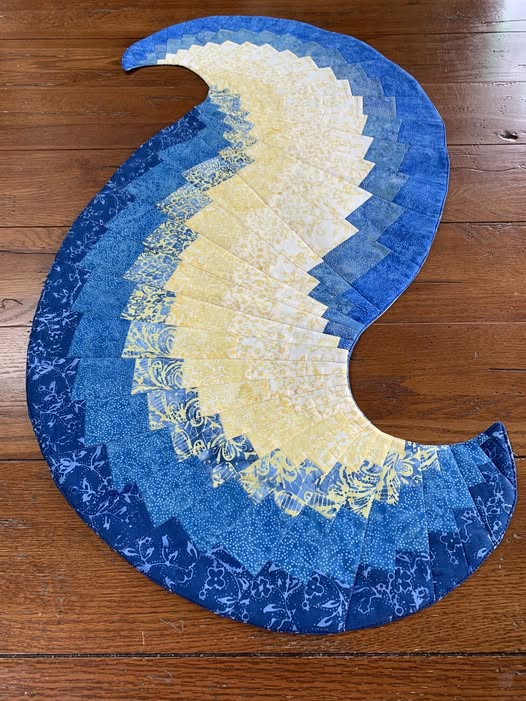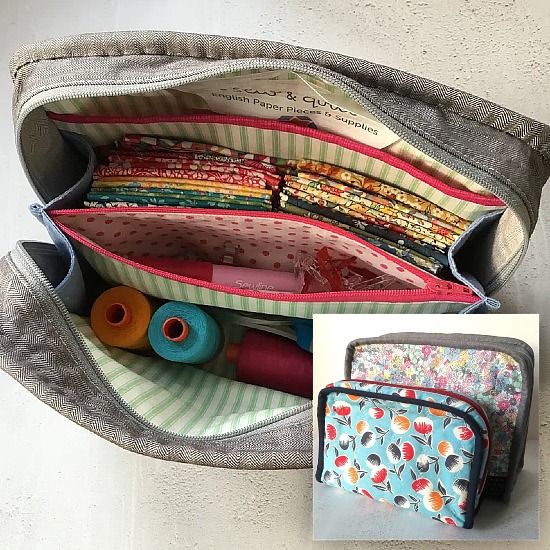
If you’ve ever struggled to carry all your crafting supplies or personal items in one place, a roomy bag for projects can be a lifesaver. This article will guide you through creating your very own bag pattern, offering a DIY bag solution that is not only practical but also stylish.
With a sewing bag tutorial like this, you can customize your bag to fit your needs, whether it’s for crafts, knitting, sewing, or just everyday use. Using a project bag like this makes organization simple and helps keep everything accessible and neat.
Making a roomy bag is not just about utility—it’s about expressing creativity. With the right bag pattern, you can tailor every detail to your style and requirements.

From choosing fabrics to selecting pockets and straps, each decision adds a personal touch. This guide breaks down the steps for a DIY bag, showing that even beginners can achieve professional-looking results with some patience and attention to detail.
Additionally, having a project bag means you don’t have to worry about items spilling or getting lost. This sewing bag tutorial emphasizes practicality, while still giving you the freedom to incorporate fun elements like colorful fabrics, decorative stitching, or unique closures. By the end of this guide, you’ll not only have a functional bag but also a sense of accomplishment from completing your DIY bag project from start to finish.
Selecting the proper fabric is the first crucial step when making a roomy bag for projects. The durability, texture, and flexibility of your fabric will determine how well the bag holds up over time. Consider heavy-duty cotton, canvas, or even denim for sturdiness. These materials can endure the weight of multiple items without sagging or tearing.
A bag pattern should guide you in choosing not only the right fabric but also suitable linings. A durable lining material ensures that small items won’t snag or poke through. Waterproof or coated fabrics are great for those who want extra protection from spills or weather. These fabric choices make your DIY bag both practical and long-lasting.
When selecting materials, don’t forget about accessories. Straps, zippers, buttons, or magnetic closures enhance functionality and style. Your sewing bag tutorial should include reinforcement points, especially at stress areas like handles or the bottom corners of the bag. These details make a difference when turning a simple project bag into a reliable everyday companion.
The color and pattern of the fabric can also express personality. Vibrant prints can make your roomy bag eye-catching, while neutral tones provide versatility. Combining patterns or adding contrasting elements like piping can create a professional finish that mirrors high-end store-bought bags.
Weight is another consideration. Heavier fabrics are more durable but can make the DIY bag cumbersome. Lighter fabrics are easier to carry but may require additional interfacing or stabilizers to maintain shape. Your bag pattern will often indicate where reinforcements are needed to balance durability and portability.
Finally, plan ahead for matching threads and embellishments. Coordinating colors and textures can elevate your sewing bag tutorial and create a cohesive, visually appealing project bag. Taking the time to plan these details ensures your finished product is both functional and stylish.
A clear and accurate bag pattern is essential for creating a successful roomy bag for projects. Patterns act as the blueprint, guiding each cut, fold, and stitch. Whether you’re a beginner or an experienced sewer, following a DIY bag pattern ensures consistency and minimizes mistakes.
Your sewing bag tutorial should start by reviewing all pieces and markings in the bag pattern. This includes main panels, pockets, handles, and closures. Understanding how these pieces interact helps prevent errors and makes assembly smoother. A project bag can have multiple compartments, so it’s important to know where each section fits.
Patterns can be digital or printed. Digital patterns often allow for resizing, which is helpful if you want a larger or smaller roomy bag. Printed patterns provide a tactile guide, making it easier to trace pieces onto your chosen fabric. In both cases, attention to detail is key.
Markings such as seam allowances, notches, and fold lines in a bag pattern are crucial. Ignoring them can lead to uneven seams or misaligned pieces. Your DIY bag will look more professional if you carefully transfer these details onto your fabric.
Additionally, some sewing bag tutorials include optional embellishments or design variations. Following the base bag pattern first ensures that structural integrity is maintained before adding decorative elements. This step-by-step approach simplifies the process and enhances the overall appearance of your project bag.
Finally, understanding the pattern allows you to adapt it to your needs. Need extra pockets? A larger main compartment? Modifying a well-constructed bag pattern is much easier than starting from scratch. This flexibility is what makes creating a roomy bag so satisfying and practical.
Once you have your fabric and bag pattern, it’s time to start sewing your roomy bag for projects. Begin by cutting all pieces carefully, following the lines and markings of your pattern. Accuracy at this stage affects the final shape and functionality of your DIY bag.
Your sewing bag tutorial should include reinforcing stress points, especially where handles attach or pockets meet the main body. Use backstitching or extra layers of fabric to ensure durability. This makes your project bag strong enough to carry heavier items without tearing.
Next, assemble pockets and compartments as indicated in your bag pattern. These elements increase usability and help keep your bag organized. Small interior pockets are ideal for tools, pens, or other essentials. Exterior pockets can provide quick access to frequently used items.
Attach handles or straps according to the instructions. Consider the comfort of carrying the bag and the weight it might hold. Adjustable straps can increase versatility, while shorter handles are perfect for hand-carry DIY bag designs.
Sew the main body pieces together, ensuring seams align precisely. Use a pressing iron to flatten seams for a professional finish. Following the sewing bag tutorial step by step ensures your roomy bag looks polished and functions well.
Finally, add any closures, embellishments, or finishing touches. Buttons, zippers, or magnetic snaps enhance security and style. Decorative stitching or fabric accents make your project bag unique and visually appealing, completing your DIY project with pride.
One of the joys of creating a roomy bag for projects is the ability to customize it. Your bag pattern provides structure, but you can personalize fabrics, colors, and details. Add embroidery, appliqué, or fabric paint for a unique touch.
Consider the intended use when customizing. A DIY bag for sewing tools may require many compartments, while a knitting bag benefits from larger, open spaces. Tailoring your sewing bag tutorial to your needs ensures maximum usability.
Adjusting strap length, pocket placement, or even adding detachable sections can make your project bag more versatile. These modifications don’t compromise the structure of your bag pattern but improve convenience.
Think about durability too. Reinforce corners, use strong thread, and double-stitch seams in areas that will bear weight. A well-constructed roomy bag lasts longer and provides better support for heavy crafting materials.
Color coordination is another customization tip. Harmonizing fabrics with thread colors, zippers, and handles can create a polished, professional look. Even small details like contrasting stitch lines can enhance your DIY bag aesthetically.
Finally, consider portability. If you’ll carry your project bag frequently, lightweight fabrics, ergonomic straps, and smooth closures improve comfort and practicality. This ensures your sewing bag tutorial results in a bag that’s both functional and enjoyable to use.
Q1: Can beginners make this roomy bag using the pattern?
Yes! The bag pattern is designed for all skill levels. Following the sewing bag tutorial step by step allows even beginners to achieve great results.
Q2: What fabric is best for a durable project bag?
Heavy-duty cotton, canvas, denim, or coated fabrics work best. They provide sturdiness while allowing for customization in a DIY bag.
Q3: Can I resize the bag pattern?
Absolutely. Many digital bag patterns allow resizing. Adjustments can make your roomy bag larger or smaller depending on your needs.
Q4: How do I reinforce the handles for heavy loads?
Backstitching, adding extra layers, or using interfacing ensures handles can support weight. This is essential for a functional project bag.
Q5: Are there design variations I can add?
Yes! Pockets, straps, closures, and decorative elements can all be customized. Follow the base bag pattern first before adding personal touches.
Q6: Can this bag be used for purposes other than crafting?
Definitely. The roomy bag is versatile and can be used for travel, groceries, gym, or daily use.
Creating a roomy bag for projects using a bag pattern is an enjoyable and rewarding DIY project. By carefully selecting fabrics, understanding the pattern, following the sewing bag tutorial, and customizing details, you can produce a DIY bag that is both practical and stylish. From reinforced handles to multiple compartments, each feature contributes to a bag that meets your unique needs.
We’ve covered how to choose materials, understand the bag pattern, follow step-by-step sewing instructions, and personalize your bag for maximum functionality and aesthetic appeal.
Now it’s your turn to bring this project bag to life. Share your honest opinions, experiences, and any suggestions for improvements—we’d love to hear how your roomy bag turned out!
